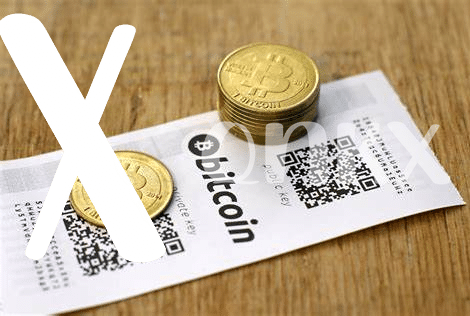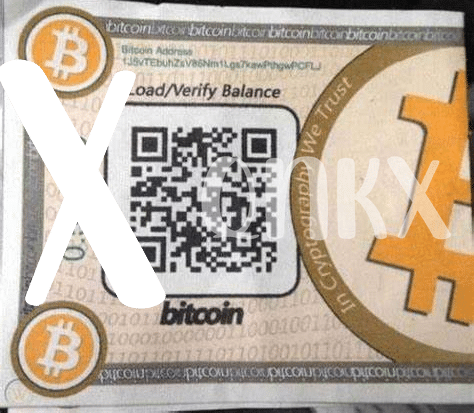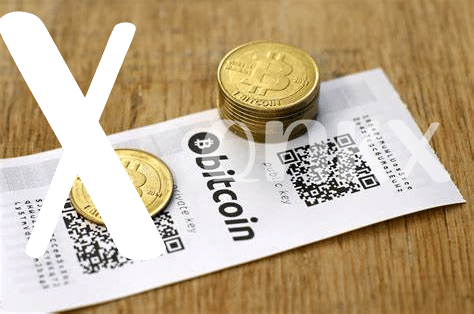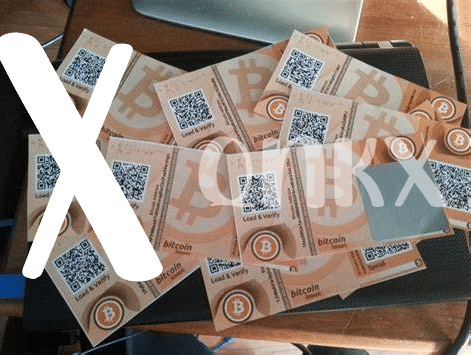🤔 Why Choose Paper Wallets for Your Bitcoin?

In the digital world we live in, keeping our bitcoin safe is just as important as securing the money in our wallets. Imagine, then, a way to store your bitcoin that’s not only super secure but also feels a bit old-school cool. That’s where paper wallets come in! Think of a paper wallet like a secret treasure map; it holds the keys to your bitcoin, but instead of being stored online where hackers might get their sneaky hands on it, it exists in the real world, on a piece of paper. The charm of paper wallets lies in their simplicity and the high level of security they offer. Without the need for fancy gadgets or the latest tech, all you need is a piece of paper with your bitcoin keys printed on it. This means you’re immune to online hacking attempts, giving you peace of mind. Plus, it’s an easy and inexpensive way to secure your digital treasure. However, it’s crucial to handle this paper with care because, just like any important document, its safety is in your hands.
| Pros of Using Paper Wallets | Cons of Using Paper Wallets |
|---|---|
| High security from online attacks | Can be easily lost or damaged if not handled properly |
| Simple and inexpensive creation process | Requires careful physical handling and storage |
| No need for electronic devices to hold | Recovery is impossible if the paper is lost |
🛠 Setting up Your Paper Wallet the Right Way
Creating a paper wallet for your Bitcoin might sound old-school, but it’s like hiding a treasure map where only you know the “X” marks the spot. First things first, you’ll need to generate your wallet using a trustworthy online service. Think of it as crafting your very own secret code. Make sure you’re doing this on a secure internet connection to keep sneaky eyes away. After generating, you’ll print out this special code — which comes in two parts: your public address (where you receive Bitcoin) and your private key (think of it as the secret password to access your coins). Remember, printing should be done offline if possible, and on a printer that’s safe from prying eyes. This step is your first vault door to keeping your digital gold safe.
Now, for the engaging part of our treasure map adventure: sealing the deal. After printing, it’s not just about folding your paper and calling it a day. You have to protect it from physical damage — water, fire, or even just wear and tear. Some enthusiasts go as far as laminating their paper wallets or storing them in a safe. Imagine treating your Bitcoin like an ancient map; you wouldn’t just leave it lying around. It’s important to store it somewhere only you know or can access. This doesn’t just mean hiding it under your mattress, but considering a safety deposit box or a secure, hidden spot in your home. As you embark on this journey, remember: your paper wallet is as secure as the precautions you take. For a deeper dive into cryptocurrency technologies and how they’re shaping finance, check outhttps://wikicrypto.news/decoding-the-technicalities-how-bitcoin-and-nfts-work-together for insightful analysis.
🏦 the Best Environment to Store Your Paper Wallet

Think of your paper wallet like a precious photo. You wouldn’t leave a cherished photo just anywhere because light, moisture, or even a little coffee spill could ruin it. For your paper wallet, the ideal spot is like a cozy, safe nook for that photo. You want somewhere dry because moisture is like an invisible monster that can fade the ink over time, making it hard to see your wallet’s details. Bright sunlight? Also a no-go. Just like it can make the colors in a photo disappear, it can do the same to your paper wallet’s important information. And let’s not forget about temperature – keeping it cool is key. Too hot, and the paper could start to degrade, too cold, and it could become brittle. So, a hidden spot in your home, perhaps a lockable drawer or a small safe, away from prying eyes, light, and moisture, is perfect. Think of it as creating a little secret haven for your bitcoin, ensuring it stays safe and snug, ready for when you need it.
🚫 Common Mistakes to Avoid with Paper Wallets

Diving into the world of paper wallets for storing Bitcoin might feel like you’re taking a step back in time, but it’s a tried-and-true method for keeping your digital coins safe. The charm of a paper wallet lies in its simplicity – it’s essentially a piece of paper with your Bitcoin’s secret keys printed on it. However, even the simplest methods have pitfalls. A common blunder is treating this piece of paper like any old note, leaving it around where it can get damaged by water, fade from sunlight, or worse, get tossed out with the recycling! Imagine throwing away your digital fortune with the Sunday paper – a heartbreak waiting to happen. Another oversight is forgetting about it entirely. If you don’t glance at your paper wallet now and then, you could miss out if it’s compromised or deteriorates over time. For those looking to dive deeper into keeping their Bitcoin secure, or just itching to learn more about the ever-evolving world of cryptocurrency, educational courses on bitcoin and cryptocurrency technologies market trends can be a treasure trove of information. Keeping up with the latest trends can help you avoid common mistakes and ensure your paper wallet remains a safe haven for your digital gold.
🔄 Transferring Bitcoin to and from Paper Wallets
Moving your Bitcoin to a paper wallet is like burying a treasure chest; you’ve got to do it carefully to ensure it stays safe. But when the time comes that you need to use your digital coins, how do you transfer them back without a hitch? Imagine it like unearthing your treasure with just the right map and tools. First, you’ll need the public and private keys; these work like the map to your treasure and the key to unlock it. Entering these keys carefully on a trusted digital wallet or Bitcoin ATM can move your Bitcoin from paper to digital form, ready for use. Remember, a straightforward but deliberate process ensures your Bitcoin moves safely without attracting unwanted attention. Conversely, depositing into your paper wallet requires sending Bitcoin from your digital wallet to the public address of your paper wallet—think of it as putting your treasure back in the chest for safekeeping. Below is a table summarizing the steps for each process:
| Action | Steps | Tools Needed |
|---|---|---|
| Depositing into Paper Wallet | Send Bitcoin from digital wallet to paper wallet’s public address. | Digital Wallet, Paper Wallet |
| Transferring from Paper Wallet | Use private key on a digital wallet or ATM to move Bitcoin. | Paper Wallet, Digital Wallet/Bitcoin ATM |
This gentle dance between physical and digital forms ensures your Bitcoin remains just where you need it, either safely stored away or ready at your fingertips for spending or trading.
💡 Keeping Your Paper Wallet Safe from Others

Imagine your paper wallet as a secret treasure map. 🗺️ Just like pirates of the old days who went to great lengths to hide their booty, you need to be just as cunning to keep your digital treasure safe. Think of it as a physical key to your digital gold. The trick is to keep this key under wraps and out of sight. Just like you wouldn’t leave your house keys lying around for anyone to grab, treat your paper wallet with the same level of caution. A good starting point is to keep it in a secure place that only you know about. But remember, it’s not just about hiding it away; you also want to protect it from physical damage. Water, fire, or even a coffee spill can spell disaster for your paper wallet. 🛡️
Furthermore, in this digital age where everyone’s a potential pirate looking to loot your treasures, being savvy about where you discuss or display your paper wallet is crucial. Avoid the temptation to brag or even hint about your Bitcoin hoard on social media or in public forums. Loose lips can attract unwanted attention. And for those looking to delve deeper into safeguarding their digital fortunes, understanding the broader context is vital. Exploring resources like
